#i. magnin
Text

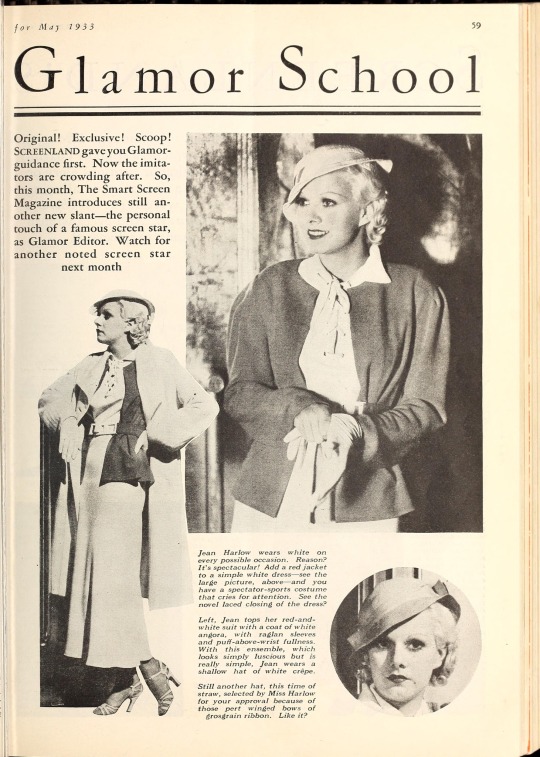
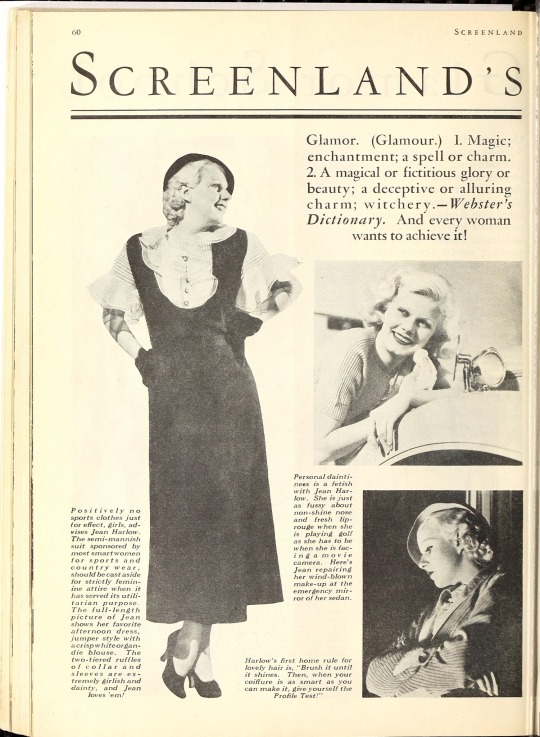

Jean Harlow in the May 1933 edition of Screenland Magazine.
All outfits she’s modeling are courtesy of I. Magnin & Company. Photos taken by Clarence Sinclair Bull.
#1930s#jean harlow#*#magazine#clarence sinclair bull#i. magnin#old hollywood#vintage magazine#vintage fashion#1930s fashion#film actress#old hollywood actress#1930s actress#vintage style#vintage designer#30s fashion#30s style#classic hollywood#fashion#gowns#vintage glamour#vintage ads#vintage model#1930s aesthetic#1930s hollywood
48 notes
·
View notes
Text

syd had something to say...
#ach i love her#she's a different one for real#sydney lohmann#pauline peyraud-magnin#griedge mbock#woso#woso community#gerwnt#dfb frauen#uwnl#uefa women's nations league
51 notes
·
View notes
Text
😩😩
12 notes
·
View notes
Text

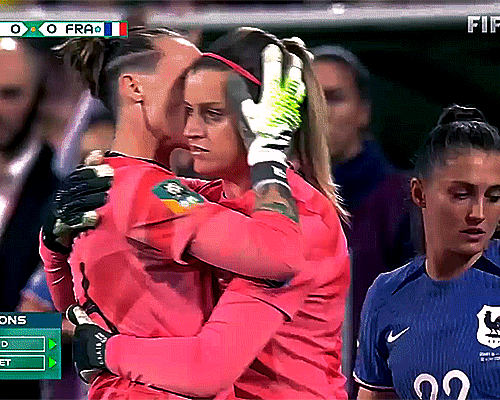
#we truly have the best keeper bro#i may not know the other one but am loving their chemistry after that final penalty#🐓🇫🇷#AUSFRA#pauline peyraud-magnin#solene durand#frawnt#france wnt#wwc23#wwc 2023#fifa women's world cup#fifa wwc#wwc#woso
12 notes
·
View notes
Text

3 notes
·
View notes
Text



can anyone help me ID this gunne sax dress???
ive not found others like it online its not the sort of prairie style thats most popular i guess? idk. regardless i havent been able to narrow down its specifics
#gunne sax#joseph magnin#2 piece gunne sax#i cant wear it so ive not been super interested in details but i want to know before doing something with it
2 notes
·
View notes
Text
I'm not the same since I learned that Peyraud Magnin is now the only out and active player of frawnt

13 notes
·
View notes
Text
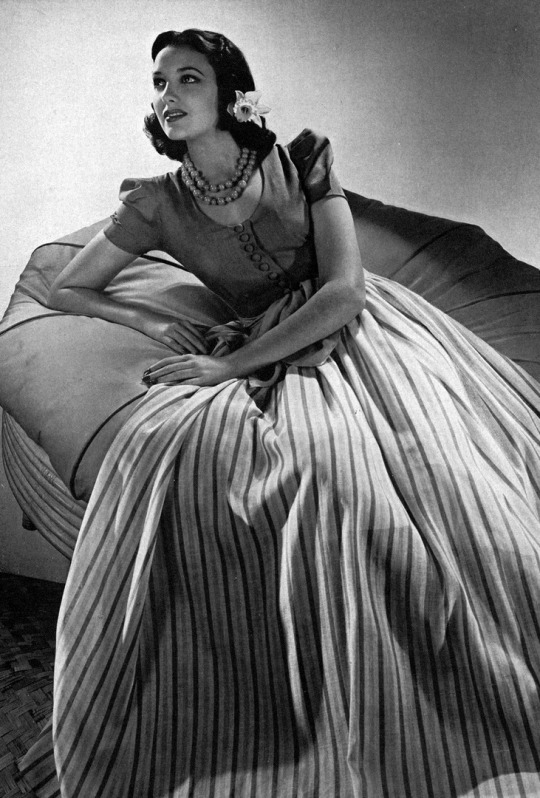
Linda Darnell in a dance dress of striped grey-and-yellow Ameritex linen and cotton by Franklin Simon; I. Magnin. Photo by Toni Frissell for US Vogue, June, 1940
112 notes
·
View notes
Text

I wanna be curated
1. Lavinia Fontana, Self-portrait, circa 1577-1585, Saragossa Museum 2. Friederike Julie Lisiewska, Self portrait of the artist, aged twenty-one, 1793, Staatliches Museum Schwerin 3. Na Hye-sok, Self-Portrait, c. 1928, Suwon Ipark Museum of Art 4. Elisa Counis, Self-portrait in Uffizi Gallery 1839, 1839, Galleria degli Uffizi 5. Marietta Robusti, Venecian lady, 16th century, Museo del Prado 6. Alice Pike Barney, Self-Portrait with Palette, 1906, Renwick Gallery 7. Elin Danielson-Gambogi, Self-Portrait, 1900, Konstmuseet Ateneum 8. Henriette Lorimier, Self-portrait, between 1804 and 1806, Musée Magnin 9. Lucia Anguissola, Self Portrait, 1557, Castello Sforzesco, Milan
#art history#art history memes#dad jokes#punny#puns#punsarelikeonions#art meme#women in art#museum nerd#women artists#womens history month#women in history#the ramones#version 2
21 notes
·
View notes
Text
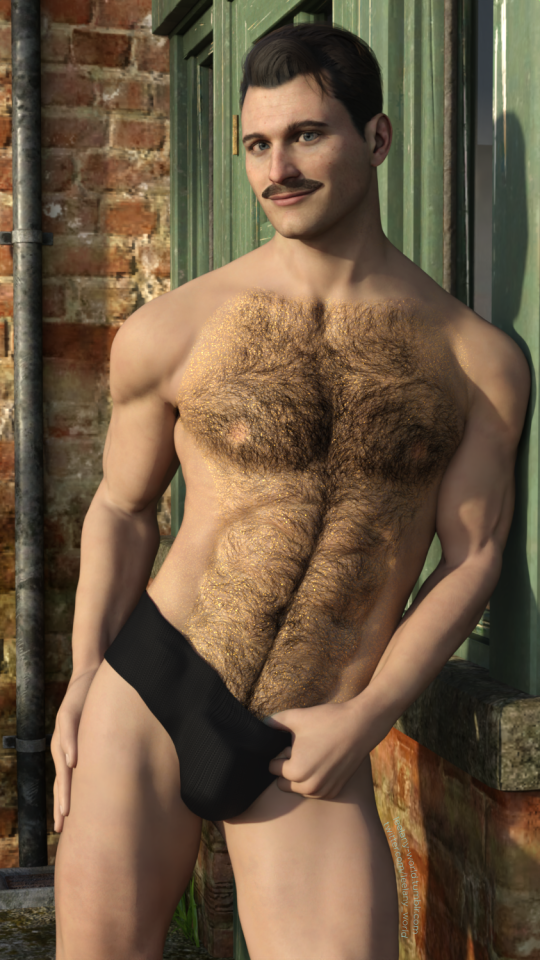
Connor 3D model by DazCover on RenderHub
Once upon a time (a year ago), through happy circumstances, a meme was born on the Big Bang Discord server to which I hereby pay tribute. 😁
Please meet MagNines or Tom 'Nines' Selleck!
No, I take no responsibility for the trauma he will inflict on you.
#again I am not sorry#dbh#detroit become human#dbh nines#dbh shitpost#daz 3d studio#3drender#3d art#leelany renders
35 notes
·
View notes
Text
The Dionysos gallery (4)
We finally reach the end of this long Dionysos series - and after dissecting the myth of Dionysos, we reach the conclusion of this gallery, kindly offered by the French Museum of Wine (you can find it all here).
First, I will include there the various paintings I did not have enough space to add in previous post, two paintings coupled with an analysis section I will loosely translate.
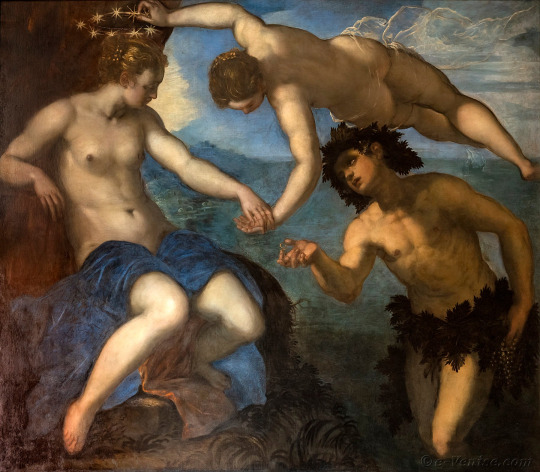
Le Tintoret's Ariadne, Venus and Bacchus
The motif of the encounter between Bacchus and Ariadne (who had been abandonned by Theseus on the island of Naxos) and Bacchus' offer to the woman of her famous gold crown made by Vulcan (according to Ovid's Fasts), has been a strong recurring motif in paintings, explored by numerous artists.
"Liber" or "Liber Pater" was originally a fertility/fecundity god whose worship took place within the oldest era of Ancient Rome. By the 7th century BCE onward Liber was associated with wine, and as a result the Romans ended up assimilating him with Bacchus/Dionysos. "Liber" as such became a mere Latin translation of the terms "Dionysos" or "Bacchus" - "Pater" meanwhile kept its role of expressing respect and adoration towards a god.

Jan van Bijlert's The Feast of the Gods
This 1630 painting currently kept at the Magnin Museum (Dijon) asks a quite troubling question: is this pagan scene... secretly a Christian Last Supper?
We are on Olympus. The gods are gathered for a feast. On the left we see Minerva, Diana, Mars and Venus, with Cupid by their side and Flora behind them. At the center of the table, a crowned Apollo appears holding his lyre. To the right we can recognize Hercules thanks to his mace, and Neptune with his trident. Unfortunately several of the Olympians are missing due to the painting having been cut off: for example there is a peacock, but no side of Juno. The motif of the "feast of the gods" was very popular in Holland, ever since an engraving by Goltzius "The Wedding of Psyche and Love" (see below).
However, van Bijlert's painting can be read very differently. In the Netherlands, due to the appearance and domination of Protestantism, all pictures had been banished from the temples, putting an end to the religious painting. As such, it seems that this painting hides within it a Christian scene of the Last Supper. Apollo at the center has the same halo as the Christ usualy has, and the characters surrounding him are twelve in total like the Apostles. Now, while it is a very interesting theory, we should stay careful. As we said before, it seems the reason some of the gods are missing is because the painting was cut (a practice very common at the time) - again, there's this peacock that implies Juno used to be included. Second element: yes the Christ has a golden halo in painting to symbolize his role as the Lord of the Heavens, but long before that, the idea of a halo of light did belong to Apollo. The Greeks saw him as the "solar god" by excellence, since he was the power that ruled and organized all things, and the one that regulated spirits and intelligences (in fact, he was complementary of Dionysos since Apollo tamed, controlled and shaped the vital force and bursts of life embodied by Dionysos).
Bijlert lived in Rome in the beginning of the 1620s and we know that, just like many of his fellow painters, he was deeply impressed by the art of Caravaggio. However, the Italian painter's fame was dwindling by then - and by the 1630s his art had lost any influence over European paintings. In this decade, Bijlert focused his works on the new international trend, the classicism. Here the composition of the panting and the diurnal luminosity are purely classicist. However, the dancing satyr and the leaning Bacchus on the foreground belong to the "naturalism" of Caravaggio: ocre-colored flesh, close-ups on bodies in non-conventional positions...
(Here is Goltzius' engraving)

Second part of this post, extending from the analysis above: Christianized Dionysos! Because yes, you might be surprised to learn that the motif of Dionysos/Bacchus in classical painting was heavily Christianized or syncretized with Christian figures...

Leonardo da Vinci's Saint John the Baptist
This Saint John the Baptiste has what has been called a "pagan beauty", and this painting with a Tuscany imagery "renews the syncretism of the patron of Florence" - perhaps due to the passion for Antiquity the town had when the painting was created. Indeed, while saint John here holds a cross symbolizing the Passion of the Christ, he is dressed in a panther's skin, reminding of the cloak of Bacchus...

Leonardo da Vinci's atelier: Saint John the Baptist-Bacchus
Once again this painting shows the syncretism between the figure of saint John and the character of Dionysos. The painting was first recorded, in the royal archives, as "Saint John in the desert". However, at the end of the 17th century, perhaps due to a restoration of the painting, the name was changed to "Bacchus in a landscape". Here we have Christian symbols: a finger raised to the sky, a stag resting on the ground... But we also have Bacchic attribute: a thyrsus, grapes, a panther's skin, and a crown of what might be ivy or vine-leaves.

Caravaggio's Saint John the Baptist
Here again we have the attributes of Bacchus: the vine, of which Bacchus was the god, and a ram, an animal traditionally sacrificed for the deity. Historians of painting are agreeing that the reason the Caravaggio associated John the Baptiste with Bacchus was because it allowed him to depict the saint naked, and eroticized, very probably to reflect his own homosexuality.
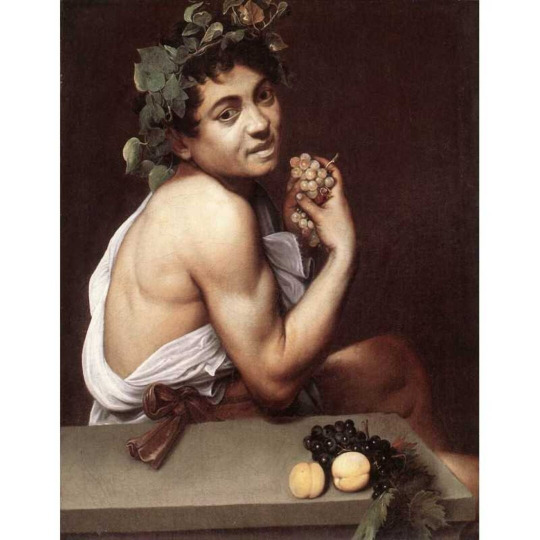
Caravaggio's "Sick young Bacchus/ The ill little Bachus"
This panting of Caravaggio has been interpreted as a self-portrait in a Bacchus-Christ fusion that is very sexual. Here, Caravaggio offers himself to the libertine cardinals of Rome, in an erotic "communion" (remember, "eucharis", means "the good flesh"). The action of carrying to his lips golden grapes gorged with juice is very sensual. Crowned with ivy, dressed in an ancient toga (which reveals a muscular shoulder), he is holding green grapes to his chest, as if he was about to press them. It has been thought that there the Greek wine of Dionysos is a mask or assimilation for the wine of the Christian mass - the invitation is for always a greater feast and bigger celebration, the wine of the Christ "subliming" the wine of Bacchus, ultimately becoming the wine an "universal mass" beyond any religion or era.
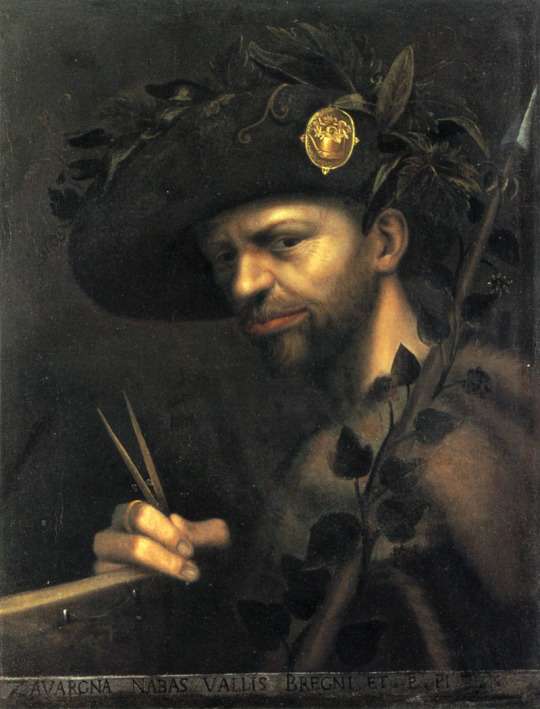
Giovanni Paolo Lomazzo's "Self portrait as a crowned Bacchus"
This painting depicts Giovanni Paolo Lomazzo in his outfit of president (called an "abbot") of the Acacademia della Val di Blenio (Ticino) - Lomazzo had just been named to this function, as the inscription at the bottom of the picture reminds the viewer. The Academy gathered all the best artists of Milan - painters, sculptors, musicians... And it was placed under the protection and patronage of Bacchus, the god that relieves from sorrows and worries, the god that inspires joy, the god that stimulates the mind and the creation, the god that frees from bondage. As such, it explains why this self-portrait has Lomazzo as Bacchus. It was an answer to the many disasters of the era, as well as to the new austerity imposed by the figures of the Counter-Reform - such as Charles Borromée, who was the archbishop of Milan and a cardinal within the Catholic church.
The Bacchic references are numerous here. The hat is wrapped in a garland of laurel and vine, with a medallion depicting vine too. There is a thyrsus surrounded in ivy. And finally there is a goat-skin, reminding of how when he was a child Bacchus was turned into a "kid" (baby goat) to avoid Juno's wrath. The compass however within the man's hand is not a symbol of Bacchus. Held like a paint-brush, it is meant to symbolize how Lomazzo "leads" and "drives" his own career like a captain would pilot his ship.
#the dionysos gallery#the art of the myth#dionysos#dionysus#bacchus#syncretism#saint john#john the baptist#art#painting#folk christianity#christian art
14 notes
·
View notes
Text

US Vogue February 1973
Adele Simpson for I. Magnin.
Lynn Woodruff in a navy and white cotton set.
Lynn Woodruff dans un ensemble en coton bleu marine et blanc.
Photo Jack Cowley
vogue archive
#us vogue#adele simpson#fashion 70s#february 1973#spring/summer#printemps/été#lynn woodruff#i.magnin#jack cowley#polka dots#advertising#publicité
16 notes
·
View notes
Text

I. Magnin, 1981.
Photographed by Victor Skrebneski.
Model: Kerry Harper.
13 notes
·
View notes
Photo
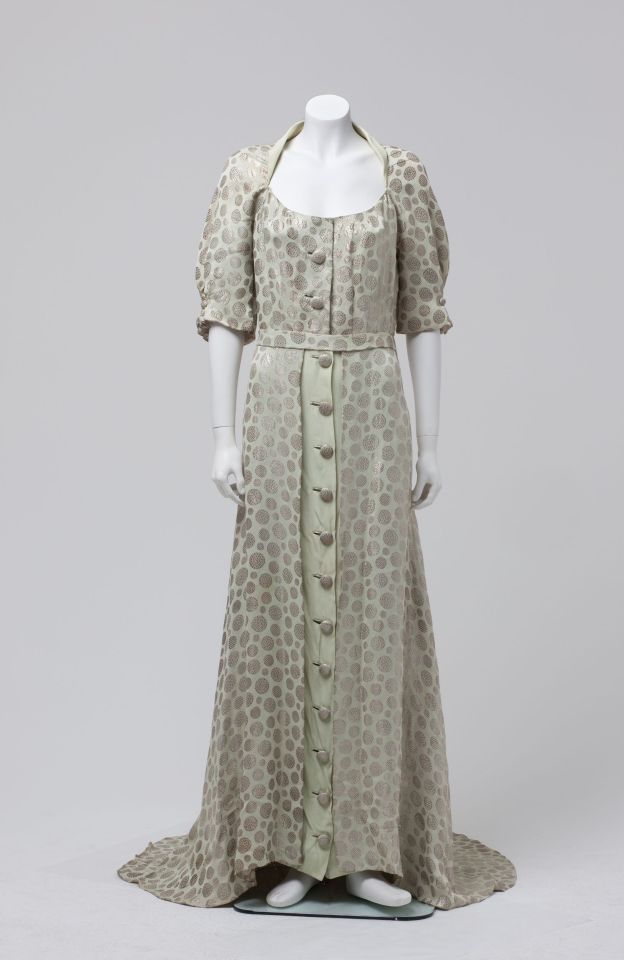
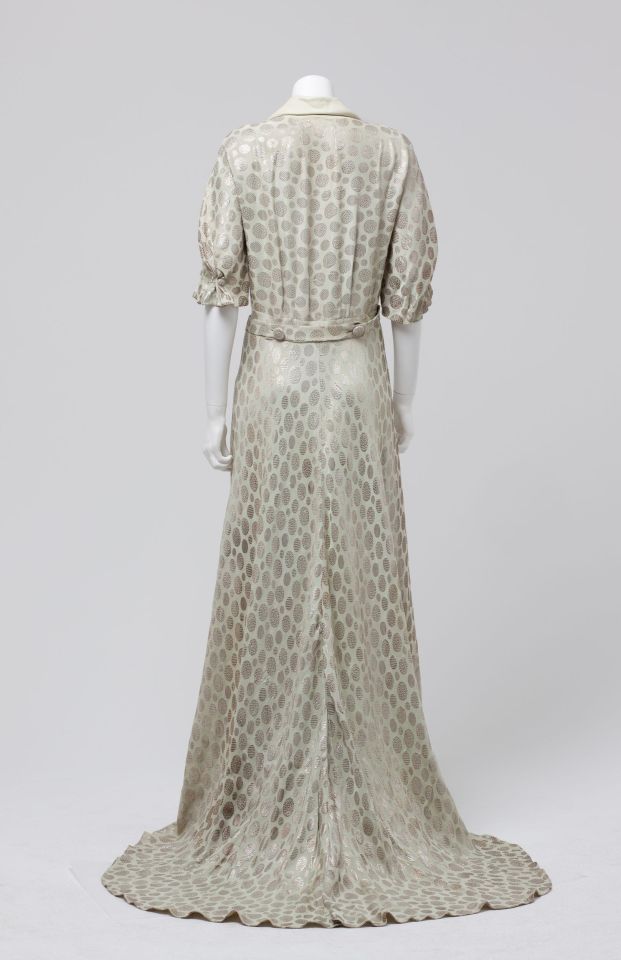
1945 Evening dress by I Magnin and Company, France
pale green and silver brocade, metal
(Powerhouse Museum)
76 notes
·
View notes
Photo
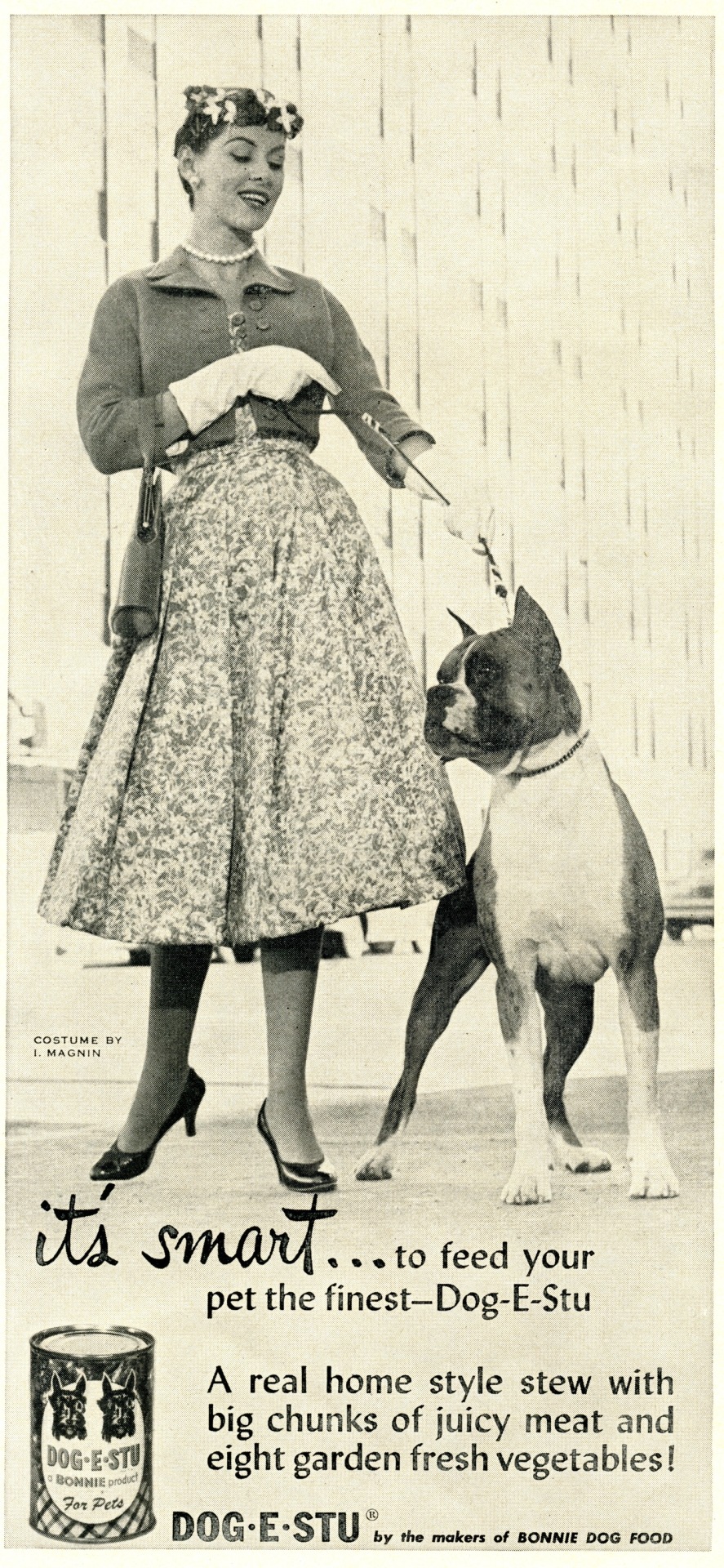
DOG-E-STU!!
(Dog-walking costume by I. Magnin [1886-1994]. Ad from 1958.)
33 notes
·
View notes
Photo


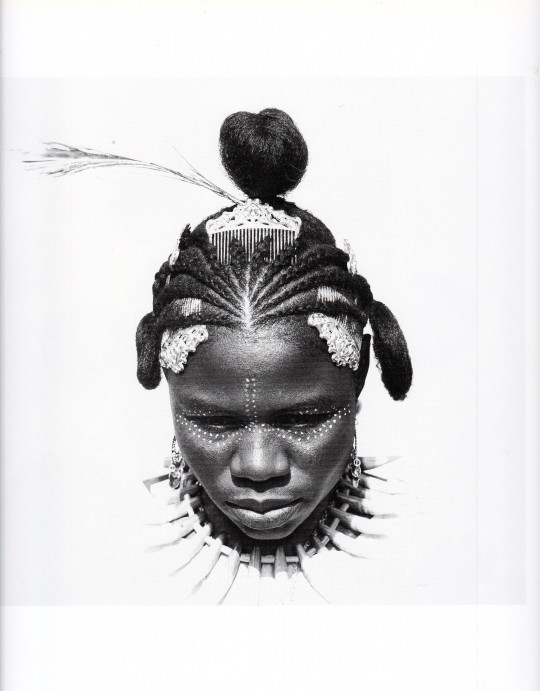
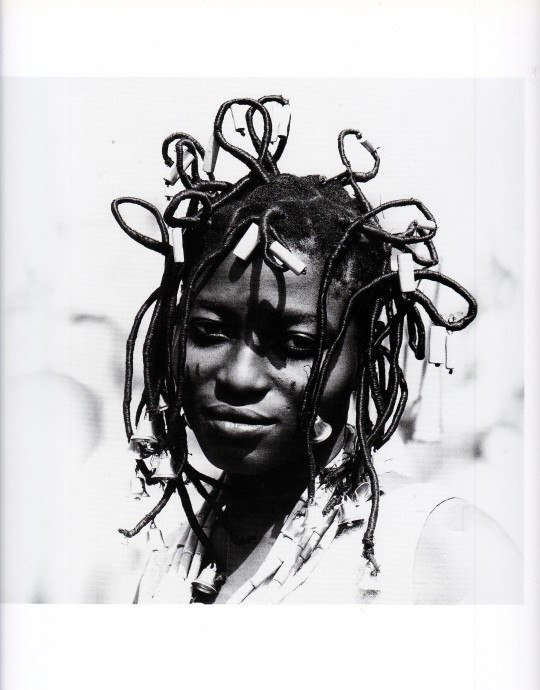


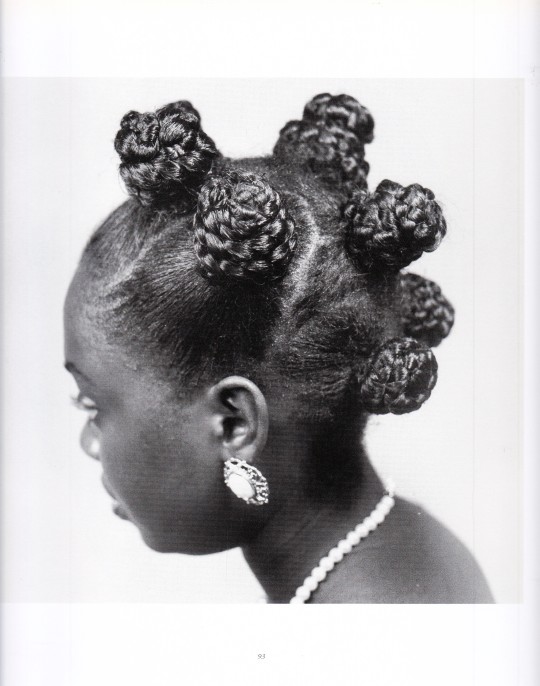


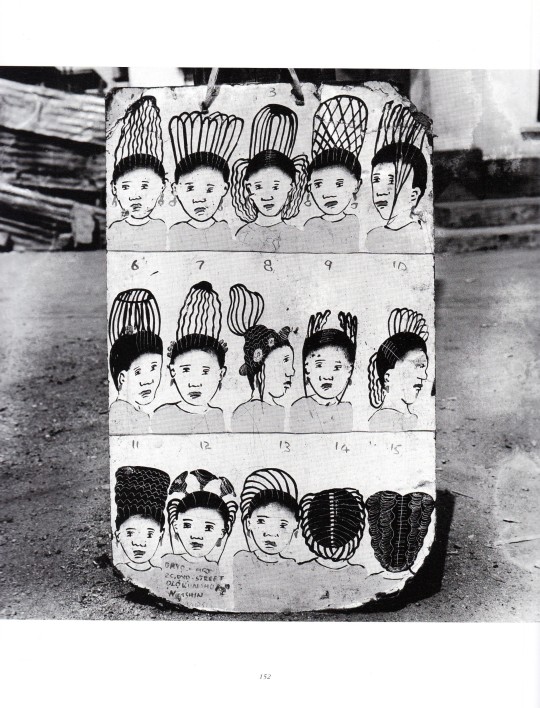
J.D. ’Okhai Ojeikere Photographs
André Magnin, Elizabeth Akuyo Oyairo
Fondation Cartier pour l’art contemporain, Paris 2000
Scalo Verlag, Zurich 2000, 176 pages, 26.67 x 28.58 cm, English, ISBN 978-3908247302
euro 190,00
email if you want to buy [email protected]
Since the 1960s, J.D. ‘Okhai Ojeikere has been documenting the culture of his native Nigeria in exquisite black-and-white photographs, capturing the elegance and exuberance of its celebrations, ceremonies, and daily life. He has amassed thousands of images, which together form an anthropological and ethnographic record that is considered to be a national treasure. With his keen eye for composition and attention to detail, Ojeikere finds art everywhere, as he describes: “I always wanted to record moments of beauty, moments of knowledge. Art is life.” This approach fuels his ongoing “Hairstyles” project (begun 1968), an internationally celebrated visual taxonomy of the hairstyles and headdresses worn by Nigerian women, captured at close range, often from behind. For Ojeikere, these hairstyles—from scalp-hugging braids to stunning sculptural forms—are ephemeral works of art, a notion that his photographs clearly affirm.
01/03/23
orders to: [email protected]
ordini a: [email protected]
twitter: @fashionbooksmi
instagram: fashionbooksmilano, designbooksmilano tumblr: fashionbooksmilano, designbooksmilano
#J.D.'Okhai Ojeikere#photography exhibition catalogue#Fondation Cartier Paris 2000#Nigeria#black and white photographs#Hairstyles#Nigerian women#photography books#rare books#fashionbooksmilano
17 notes
·
View notes